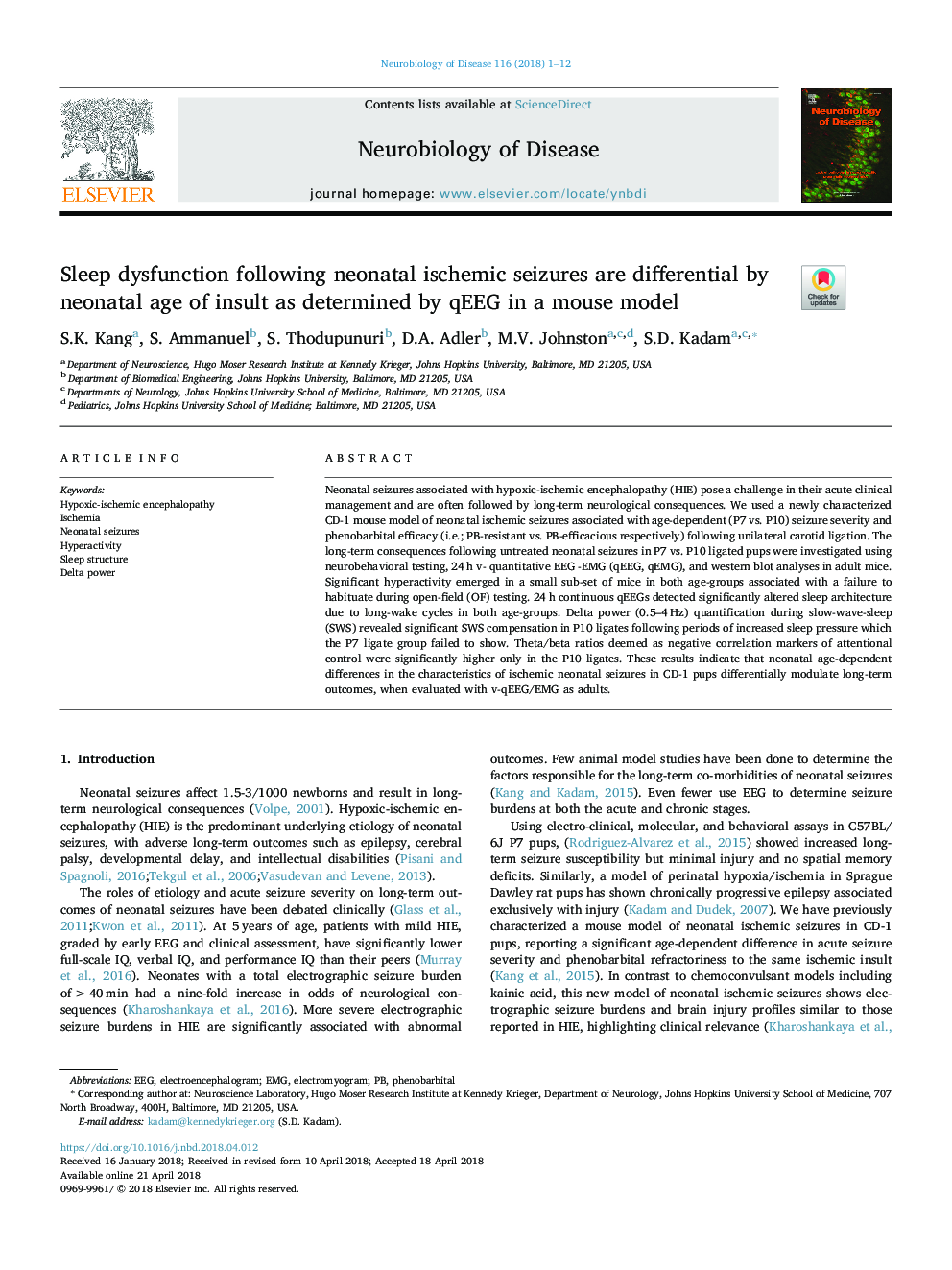| Article ID | Journal | Published Year | Pages | File Type |
|---|---|---|---|---|
| 8686343 | Neurobiology of Disease | 2018 | 12 Pages |
Abstract
Neonatal seizures associated with hypoxic-ischemic encephalopathy (HIE) pose a challenge in their acute clinical management and are often followed by long-term neurological consequences. We used a newly characterized CD-1 mouse model of neonatal ischemic seizures associated with age-dependent (P7 vs. P10) seizure severity and phenobarbital efficacy (i.e.; PB-resistant vs. PB-efficacious respectively) following unilateral carotid ligation. The long-term consequences following untreated neonatal seizures in P7 vs. P10 ligated pups were investigated using neurobehavioral testing, 24â¯h v- quantitative EEG -EMG (qEEG, qEMG), and western blot analyses in adult mice. Significant hyperactivity emerged in a small sub-set of mice in both age-groups associated with a failure to habituate during open-field (OF) testing. 24â¯h continuous qEEGs detected significantly altered sleep architecture due to long-wake cycles in both age-groups. Delta power (0.5-4â¯Hz) quantification during slow-wave-sleep (SWS) revealed significant SWS compensation in P10 ligates following periods of increased sleep pressure which the P7 ligate group failed to show. Theta/beta ratios deemed as negative correlation markers of attentional control were significantly higher only in the P10 ligates. These results indicate that neonatal age-dependent differences in the characteristics of ischemic neonatal seizures in CD-1 pups differentially modulate long-term outcomes, when evaluated with v-qEEG/EMG as adults.
Keywords
Related Topics
Life Sciences
Neuroscience
Neurology
Authors
S.K. Kang, S. Ammanuel, S. Thodupunuri, D.A. Adler, M.V. Johnston, S.D. Kadam,
